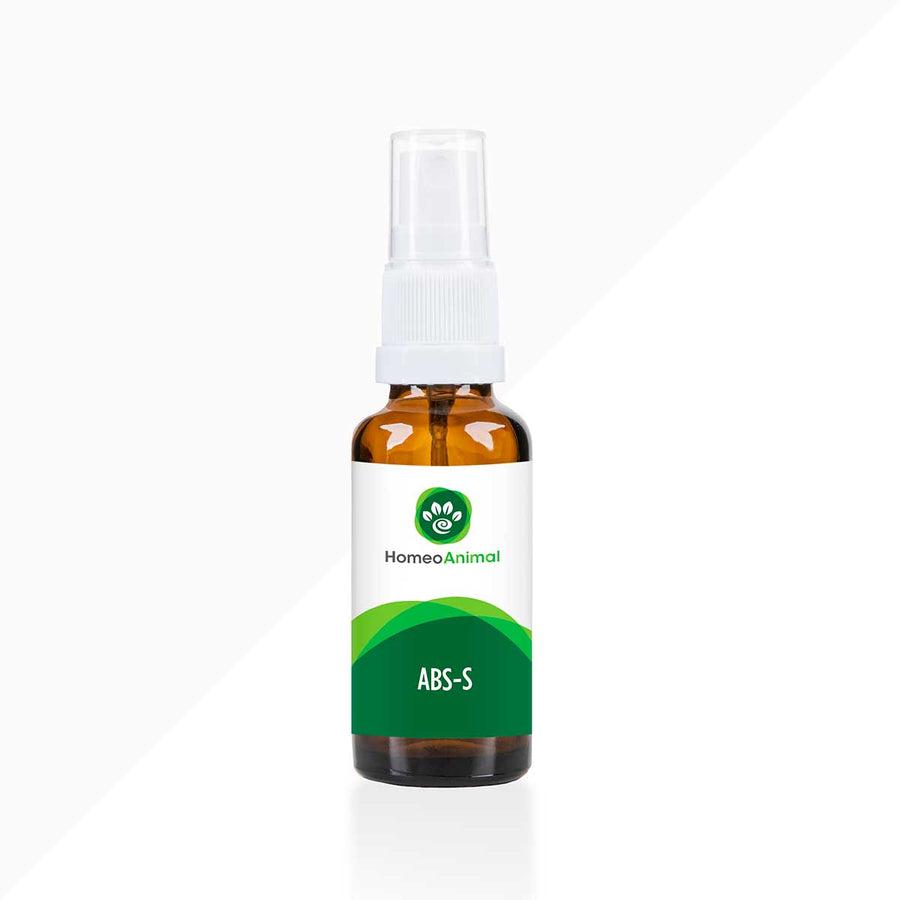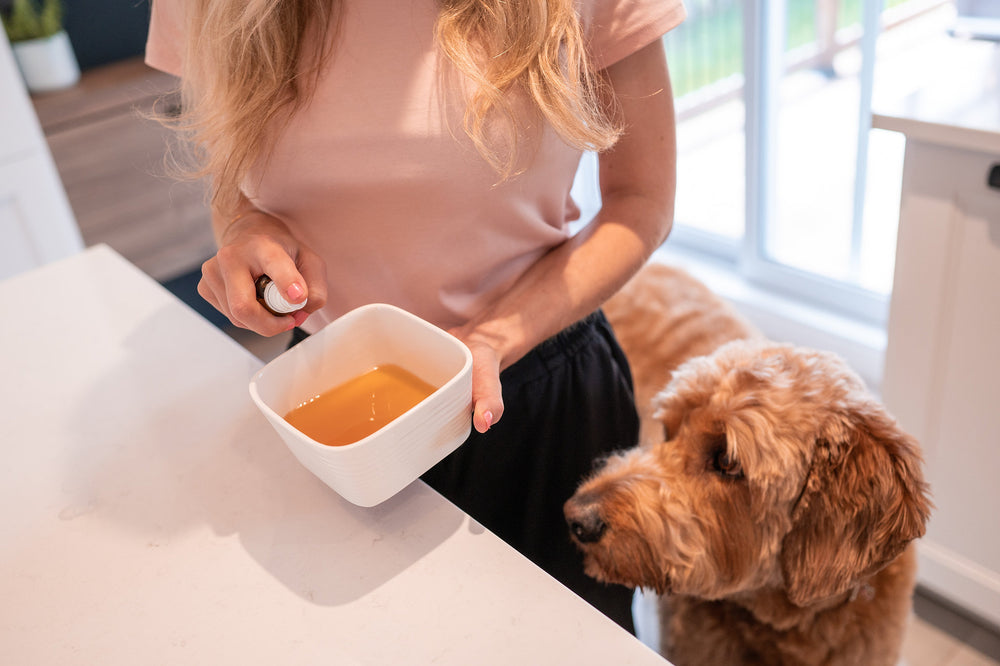How to Treat an Abscess on a Dog at Home the Right Way
Knowing how to treat an abscess on a dog at home is definitely essential if you’re looking to keep your canine family member healthy and happy. I’m going to walk you through how to do just that using natural means in just a bit.
Make sure you read on to get the lowdown on naturally treating abscess wounds in dogs at home, the symptoms you have to watch out for, the causes that usually set off this health issue (like sinus or ear infections, tooth decay, and bite wounds), as well as other pieces of information that we’re sure you’ll appreciate.
I’m even going to share with you our favorite natural remedy for abscesses in dogs if you read this blog post all the way through.
Abscess in Dog Overview

A pocket of inflamed tissue that is filled with pus at the center. It has the appearance of a swollen red lump that can either be soft and squishy or rigidly firm to the touch.
While an abscess can show up almost anywhere, it typically forms in the oral region, the toes, the inner part of the limbs, a dog's anal glands as well as underneath the paw pads. Moreover, it’s not uncommon for dogs abscesses to emerge around the eyes, ears, including neck.
Although abscesses in dogs start out small, they can expand in size and may require minor surgical procedures if not dealt with immediately. Don't hesitate to seek veterinary attention, too! Next up, we’ll talk about the symptoms of dog abscesses that you need to watch out for…
What are the Symptoms of Abscess in Dogs?

Abscess signs vary depending on the factors that trigger them, such as in the case of skin abscesses and internal abscesses. Apart from the appearance of a swollen red lump on your dog’s body, here are some of the other possible indicators:
-
Sudden loss of appetite
-
Heat emanating from the affected area
-
Sudden bouts of fever
-
Hair loss and facial swelling
-
Stinky odor emanating from your dog's skin/affected site
-
Licking or chewing at a particular area of the body
-
Severely impacted anal glands accompanied by oozing pus
Now we’ve got that covered, let’s discuss how you should take care of dog abscesses at home the right way…
How are Abscesses Treated at Home Properly?

Unlike what a lot of dog parents mistakenly think, you don’t have to immediately resort to conventional medicines when your dog has an abscess. These include oral antibiotics, anti-inflammatory medication and the like. There are actually a number of home remedies that you can use to fix this health problem:
Virgin coconut oil
Wash the affected site with a saline solution. After massaging the area with a warm compress, gently massage the abscess with virgin coconut oil. Make sure you only apply gentle pressure to avoid making the abscess burst. Let the virgin coconut oil dry completely afterward.
Keep in mind to only use non-food grade virgin coconut for this step. This approach is recommended for skin abscess and anal sac abscess. It can be also used as a natural wound ointment and pain medication.
Aloe vera
Harvest a mature aloe vera leaf and slice it lengthwise. Press the leaf until the gel comes out. Use a clean piece of cloth or a cotton swab to gently apply the gel in and around the abscess site. This strategy is best for internal abscesses (with infection underneath) that cause painful swelling. You can also use this on an open wound to curb bacterial infections.
Honey
With a clean piece of cloth or a cotton swab, put a small amount of honey on the abscess site and gently spread it all over. Replace the dressing once the honey completely dries up. Keep in mind to use natural and unprocessed honey for this application. This is recommended for skin abscesses and other types of external pet abscesses (like one triggered by a bite wound).
Oregano
Crush up fresh oregano leaves in a mortar and pestle until they become mushy. Add a bit of water to form a paste or poultice. Apply the poultice to the abscess site and cover the whole thing with an adhesive bandage or a sterile gauze pad. Replace the dressing when it goes completely dry. This also helps in treating wounds promptly and hair loss.
Nutmeg
Grind a couple of pinches of nutmeg in a mortar and pestle until it really fine. Sprinkle a bit of water until it has a thick consistency. Put the nutmeg poultice on the affected area and use an adhesive bandage or a sterile gauze pad to cover it as securely as possible. The antibacterial properties of nutmeg can also deal with developing abscesses like an antibiotic ointment.
A quick important note: While we strongly advocate for the use of natural means with regard to treating abscesses, a dog owner should make it a point to schedule a vet visit when symptoms persist. An abscess affects more than the affected site and may even result in critical health problems.
Now we’ve got that covered, it’s time we introduce to you our favorite natural remedy to use when it comes to abscesses in dogs…
Zumalka's ABS-S is a completely natural and high-quality product that is designed to get rid of abscesses in dogs and keep triggers that develop abscesses in check while promoting and supporting healthy skin.
This premium natural product is designed to deal with painful clusters of pus, irritating secretions on the skin, small boils, acute inflammation of the skin, foul secretions, redness of the skin as well as similar issues.
Next, let’s discuss the causes of abscesses in dogs…
What are the Causes of Dog Abscesses?

For starters, the main culprit that sets off abscesses in dogs is the staphylococcal or staph bacteria. This type of bacteria tends to bury into tissue walls when it enters a dog’s body through abnormal “breaks” in the skin like penetrating wounds, inflammations, and scratches.
However, during the process of eliminating this bacteria by white blood cells, some tissues may end up dying. This creates a cavity that subsequently becomes filled with pus, which turns into an abscess. The following are the common abscess risk factors:
Bacterial infection
Besides the staph bacteria, other common types of bacteria involved in abscesses in your furry friend's body are Escherichia coli, Campylobacter, and Streptococcus canis. They are the usual culprits when your pet suddenly has a strange swelling or a painful lump somewhere in his body, especially when the affected tissues are not healing properly due to age or an underlying health condition like diabetes.
Impacted anal gland
A dog’s anal sacs get squeezed out each time he defecates. This squeezing movement also drains out some fluid from the anal sacs. However, an inflammation eventually occurs (in the form of an impacted anal gland or glands) when there is a build up of this fluid.
Normally, a dog’s typical reaction to inflamed anal glands or clogged anal glands is to scoot on surfaces to try to alleviate the pain and discomfort he is experiencing. This leads to lesions in and around the anal area where bacteria can enter and cause damage.
Tooth or gum problems
Whenever a dog has tooth rot or severely decayed teeth, the staph bacteria can easily slip through the cavity and go directly to the tissues underneath the gums and all the way to the tooth root. If a diseased or damaged tooth is left untreated, it is highly likely that a gum or tooth abscess will eventually form. Oral issues can also lead to ear infections—pneumonia is a possibility as well.
This is the reason why regular dental cleanings should be on your list of priorities to prevent tooth decay and similar oral and dental issues. An affected tooth can also be very painful and can greatly affect your pet's quality of life, especially when the abscess bursts.
Bite wounds and scratches
It’s not uncommon for a dog can have scuffles with other dogs or other pets like cats. An encounter with a wild animal in the dog park during pet walks can happen, too! And these usually involve bites and scratches that can give bacteria a place to slip through. Regularly monitoring a dog—and cat indoors—is a must to prevent this from happening.
Of all the breaks in the skin that could lead to abscess in dogs, bites and scratches are the most unpredictable since they could be anywhere in the body. However, the key areas to keep an eye on are the tail, neck, head as well as the ears. You can also apply antibiotic ointment in emergency situations.
Lung abscess
A lung abscess develops when the presence of a foreign object, a bacterial infection, or a fungal infection causes tissues in the lungs to die off. While an invasive procedure can be conducted on the affected surgical site, certain medicines can also be used. These medications kill bacteria and fungi and promote healing. Now let’s talk about how long abscesses in dogs last…
How Long Does a Dog's Abscess Last?
What’s really alarming is that abscesses in dogs don’t go away by themselves. You can only get rid of a dog abscess with the application of the right treatment accompanied by the proper care and attention. If you know how to treat an abscess on a dog at home and apply it properly, this health issue will be resolved in about two (2) to three (3) days.
Next up, we’ll discuss how to prevent abscesses in dogs…
Dog Abscess Prevention

The most essential part of preventing abscesses in dogs is eliminating the chances of the staph bacteria from getting inside your canine family member’s body. Here are some key pointers to take note of on how to do just that:
Regularly check for bites and scratches
Make it a point to check your dog for any signs of bites and scratches on a regular basis. It is highly recommended that you do this during bath time so you can thoroughly examine his inner limbs, belly, and chest, which can have nicks and lesions that can be tricky to spot.
If you do spot any bites and scratches, apply the necessary home remedy immediately to encourage healing. It is also recommended to reach out to a pet homeopathy expert or drop by your pet's veterinarian for some advice.
Practice good dog oral hygiene
Taking care of your dog’s teeth and gums is essential if you’re looking to prevent the formation of abscesses in your canine family member’s oral region. Keep in mind to brush his teeth thoroughly at least four (4) times a week to get rid of the buildup of tartar and plaque.
Apart from ensuring that your dog won’t be prone to cavities and other dental issues, his breath will also become fresher if you do this regularly. And always follow your pet wellness expert's or vet's instructions to really keep your fur baby's oral and dental health in tiptop shape.
Never feed your dog bones
What you feed your dog plays a key role in preventing abscesses from forming in his teeth, gums, cheeks, and tongue. Remember to never give your dog any food that could splinter when chewed, such as bones of all kinds.
Unlike what a lot of people mistakenly believe, cooked bones such as those used for soups and stews still break into pieces when chewed by a dog. These fragments could lead to injuries in and around the mouth that may encourage abscess formation.
Don’t let your dog get in contact with sharp and pointy objects
Always make sure that your dog does not get in contact with sharp and pointy objects that could lead to nicks and cuts, which could cause abscesses. This includes pieces of furniture with sharp accents, kitchen utensils, crafting materials as well as carpentry tools that you may have in your home.






Leave a comment